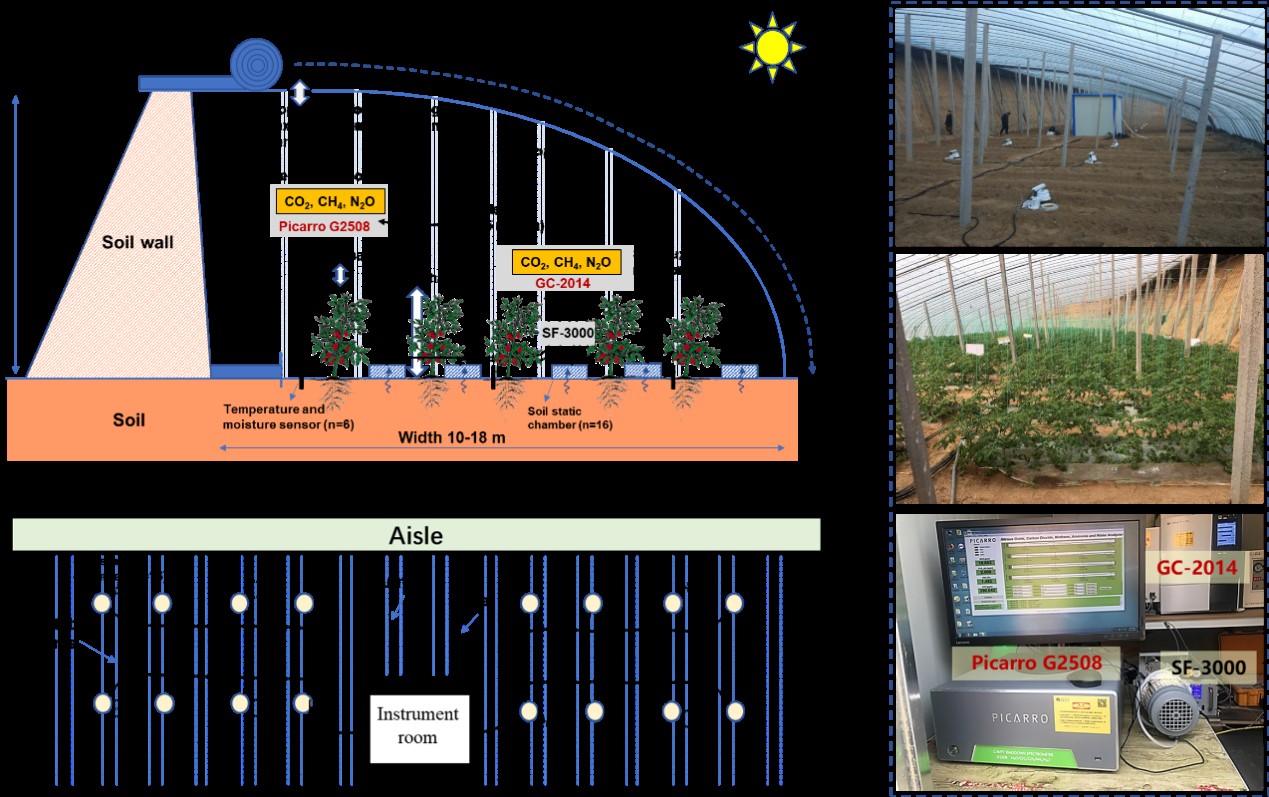Novel Whole-Greenhouse Static Chamber Method Enhances Accuracy of Greenhouse Gas Emission Quantification in Greenhouse Cultivation Systems
A team of scientists from the Chinese Academy of Sciences (CAS) has developed a novel method to more accurately quantify greenhouse gas (GHG) emissions from large-scale greenhouse cultivation, addressing a longstanding challenge in monitoring the environmental cost of protected agriculture. The study, led by researchers at the CAS Institute of Applied Ecology, proposes treating the entire greenhouse as a single static chamber—an innovative approach that accounts for spatial variability and diurnal dynamics, both of which have compromised previous efforts to measure emissions reliably.
Over the past three decades, greenhouse farming has expanded dramatically, with global coverage reaching 1.3 million hectares by 2019. China alone accounts for more than 60% of this area. These enclosed structures, typically made of plastic films, enable off-season or high-value crop production, but they also require intensive irrigation and fertilization, which are known to increase emissions of carbon dioxide (CO₂) and nitrous oxide (N₂O)—two potent greenhouse gases. However, accurately quantifying these emissions has remained elusive. Conventional techniques, such as small static chamber methods, struggle to provide spatial representativeness data, making it difficult to capture the heterogeneous emission characteristics of soil. Meanwhile, micrometeorological methods are hindered by the undulating surface structure of greenhouses and the discontinuous ventilation patterns.
To overcome the limitations of traditional techniques, the research team innovatively proposed the 'whole-greenhouse static chamber method.' This approach treats the entire greenhouse as a closed static environment, indirectly estimating emission rates by monitoring the accumulation of gas concentrations during the sealed nighttime period. Between 18:00 and 24:00—when photosynthesis ceases and CO₂ and N₂O released from the soil and plants accumulate—the scientists can infer ecosystem respiration (Re) rates and N₂O flux with high precision.
The approach was field-tested in a commercial vegetable greenhouse in Weifang, Shandong Province, where static soil chambers recorded localized fluxes and tracked internal gas concentrations continuously over 70 days. The researchers observed that methane (CH₄) emissions were negligible, while CO₂ and N₂O emissions were substantial. Notably, because plant photosynthesis offsets a portion of Re by absorbing CO₂ during the day, N₂O emerged as the dominant direct greenhouse gas in these systems. Across 15 greenhouses, the team estimated annualised average emissions of 17.8 ± 8.0 megagrams of carbon per hectare per year (Mg C ha⁻¹ yr⁻¹) from respiration and 21.3 ± 19.7 kilograms of nitrogen per hectare per year (kg N ha⁻¹ yr⁻¹) from N₂O.
By applying the average N₂O emission rate observed in this study, the researchers estimated the emissions from national greenhouse cultivation areas in China. This revealed that China’s horticultural greenhouses emit around 16,800 tonnes of N₂O-N annually, accounting for nearly 8% of total agricultural N₂O emissions nationwide. In Shandong’s Weifang region alone, greenhouses occupy just 20% of the farmland area but contribute nearly 60% of the local N₂O emissions, highlighting the emergence of regional emission hotspots.
Beyond its technical merits, the whole-greenhouse static chamber method is particularly notable for its practicality and scalability. Requiring only passive gas sampling during night-time closure (the sealed period of the greenhouse), it offers an accessible and scalable solution for policymakers and researchers aiming to track emissions and optimize greenhouse management under climate mitigation goals.
The findings above were published in the journal Science of the Total Environment under the title "Quantifying ecosystem respiration and nitrous oxide emissions from greenhouse cultivation systems via a novel whole-greenhouse static chamber method."

Figure 1. Schematic cross-section of a typical northern Chinese greenhouse with gas monitoring systems (a), top view of automatic static soil chambers deployed inside the greenhouse (b), and associated field monitoring photographs (c) (Image by QUAN Zhi).



